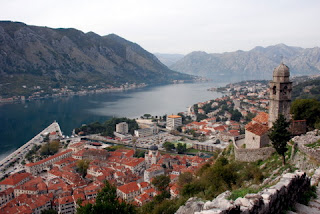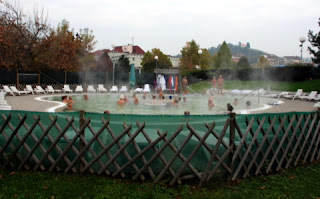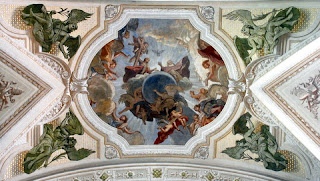This is the first of an occasional series that will explain aspects of living in our motorhome, Henrietta.
Television is not very important to us but, given that we were going to be away for 12 months, we wanted to be able to keep up with what was happening in Britain. We also felt that we may want to have some British culture once we had little or no contact with British people or the English language. We therefore purchased a satellite receiver, meter, 60cm satellite dish, cable and tripod stand from 12v TV and a 17” flat screen television from Currys.
Henrietta has a TV turntable cunningly concealed in a cupboard between the bedroom and the kitchen / lounge, which means that the TV may be viewed from either room. I used my very limited DIY skills to create a vertical stand that I attached to the turntable and by using self adhesive Velcro, the TV is attached on one side and the satellite receiver on the other. This minimises the space taken by both devices, still allows the turntable to rotate and allows either device to be easily detached if required. The Velcro has proved to be very effective in keeping the devices in position despite some very rough roads.
Setting up the satellite to receive a signal is not as easy as you may think. Finding the required satellite (there are 3 very close together) can be a real pain. The technique is as follows:-
1) Set up the dish on the tripod, ensuring the tripod is level.
2) Attach the meter to the dish and the coax cable to the meter and satellite receiver.
3) Point the dish due south at an elevation dependant upon your location e.g. 24 degrees in London or 31 degrees in Vienna.
4) Pan the dish slowly towards the East until the meter shows a single and then adjust the dish horizontally and vertically until the signal is at maximum strength.
5) If you are lucky, you will have located the Astra 2 satellite and the satellite receiver will burst into action. More likely, you will have located Astra 1 or Hotbird and you will have to move the dish further East and reduce the elevation to locate Astra 2. This means going through the same process of maximising the single, and praying!
6) If this isn't complex enough, if there is anything in the way of the single (trees, buildings, power lines etc.), the satellite box will refuse to 'lock on' to the signal and you can't watch television. Strong winds that move the dish, can have the same effect.
7) Things are further complicated by the fact that many of the British broadcasts only have a small satellite footprint, meaning that they can only be received in part of Europe relatively close to Britain. This means that you can find the correct satellite, get the receiver 'locked on' and still not be able to receive BBC.
You can imagine that this can result in a certain amount of frustration and, in the early days, it caused me a great deal of frustration!
The good news is that, in addition to the television, you can pick up many radio stations including BBC. Being a BBC Radio 4 fan, this is really good news.
Being very keen rugby fans (“Come On Bath!!!!”), we were keen to watch the Rugby World Cup (covered by ITV) and this worked fine until we got to Eastern France when we went outside the satellite footprint. However, we were delighted to find out that we could receive S4C (Welsh ITV) and they were also covering some of the World Cup. They didn't cover at least one of the England matches but we saw quite a few matches involving the home nations. The drawback of S4C is that it is all in Welsh, but beggars can't be choosers!
It came to the end of the pool matches and I discovered that S4C were covering all of the quarter final matches – perfect.
















































